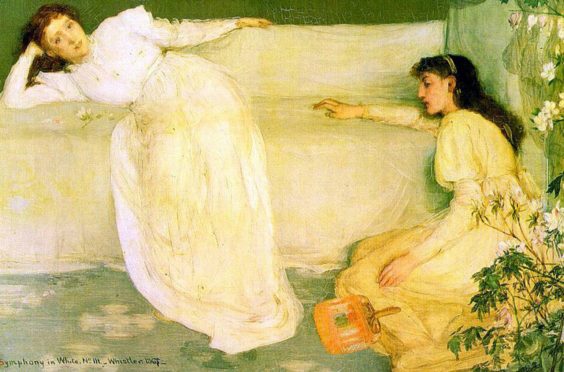
Making colour and mood king, US artist James Whistler paved the way for the abstract.
Now, as the Hunterian Art Gallery in Glasgow showcases his work, exhibition manager Ruth Leach tells Sally McDonald the Honest Truth about his Scottish connections.
Who was James Abbott McNeil Whistler?
Whistler was one of the most prominent artists of his day. His passionate, progressive views about art challenged the artistic establishment and laid foundations for 20th Century abstraction. He was born in Massachusetts, USA in 1834, but could trace his heritage back to the Scottish island of Barra.
Whistler also had strong connections with Scotland, and particularly with Glasgow. The combined holdings of the University of Glasgow make it an unrivalled centre for the study and enjoyment of Whistler’s work.
How do we know that Whistler had Scottish roots?
A letter held by the Archives & Special Collections indicates that his mother Anna was descended from the McNeill’s of Barra.
Whistler wrote: “Our MacNeills are those of Barra – the Highland McNeills – though I fear I have rather neglected my cousinships, having lived so much away from my own people.”
Why was his art so important in the Victorian period?
His work as a painter, printer and theorist was a major influence on a younger generation of artists, and he was an important contact between the arts worlds of Europe and America. He produced more than 550 paintings, 490 etchings, 179 lithographs and 1,800 works on paper. And he published letters, pamphlets and books on art and wrote thousands of letters.
Why is Whistler’s portrait of his mother so famous?
The work, Arrangement In Grey And Black No. 1: Portrait Of The Artist’s Mother, went on a tour of the USA in the early 1930s and attracted a record number of visitors. It also appeared on a US postage stamp in 1934 to celebrate Mother’s Day. The painting has been endlessly parodied. It even featured in the 1997 Mr Bean film, Bean: The Ultimate Disaster Movie.
Although most people will instantly recognise the familiar seated image of Anna Whistler, few will have any idea about the person. She lived in America, Russia, and England, travelled the high seas on the Cunard line, raised two sons, lost three in infancy, lived through the Civil War, and managed her son’s bohemian Chelsea household.
Has the portrait been on show in Scotland?
The Hunterian was fortunate to borrow the painting in 2003 from the Musée d’Orsay in Paris for an exhibition marking the centenary of Whistler’s death.
Is it true the artist was given an honorary degree by the University of Glasgow?
Whistler was awarded an honorary degree of Doctor of Law in 1903, shortly before his death.
Why is Glasgow important to the story of Whistler’s life?
Whistler forged strong links with the city through its artists, dealers and collectors. His close association with the Glasgow Boys in the 1880s helped bring about the city’s purchase of his portrait of the philosopher-historian, Thomas Carlyle in 1891.
Whistler met the Glasgow Boys’ John Lavery in 1888 and they remained friends. He also corresponded with another of the Glasgow Boys, Edward Arthur Walton, throughout the 1890s.
How did the university come to hold the artist’s letters, papers and photographs?
Walton’s son John, regius professor of botany at the University of Glasgow (1930–62), played an instrumental role in the acquisition of the Whistler Estate from his sister-in-law, Rosalind Birnie Philip. When he died in July 1903, she inherited the estate. She went on to make substantial gifts of his works.
The art collection, and Whistler’s personal collections of decorative art, memorabilia, and the contents of his studio, are held by The Hunterian, an archive of more than 4,000 letters, catalogues, press cuttings and photographs.
Glasgow is now the world centre of Whistleriana. Why?
The depth of the Whistler collections in Glasgow makes it one of the pre-eminent collections. The archival material have enabled researchers to study Whistler’s work for his legacy to be better understood.
Whistler Art & Legacy, Hunterian Art Gallery, Glasgow University until October

Enjoy the convenience of having The Sunday Post delivered as a digital ePaper straight to your smartphone, tablet or computer.
Subscribe for only £5.49 a month and enjoy all the benefits of the printed paper as a digital replica.
Subscribe